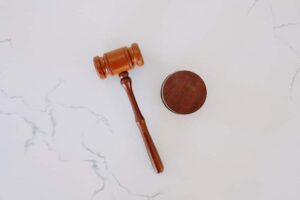What are the legal issues behind the registration of Off-Chain NFTs?

For some time now, companies have been launching NFT collections, a move that follows on from their social media presence, in order to establish a full online presence beyond the traditional website operation. However, establishing a Web3 presence is not as clear-cut as it sounds, and brands may take legal risks especially, not knowing what they are actually offering for sale on the blockchain. Thus, legal advice by trademark attorneys and lawyers specialised in NFTs should not be considered secondary, as it helps to avoid unpleasant surprises as to what is being offered for sale, once the NFT is presented on a platform.
What are NFTs ?
NFTs, or Non-Fungible Tokens, are tokens with a unique identifier and metadata operating on a blockchain. There are two types of NFT, the main difference being the nature of their smart contract.
On-chain NFTs are tokens written entirely on the blockchain: both the metadata and the accompanying smart contract exist on the blockchain. It is said that NFTs live and breathe on the blockchain.
On the other side, off-chain NFTs are not stored on the blockchain. Several options then exist to store the NFT off-chain, such as storage on a cloud (Google Cloud, iCloud, etc.), or storage on a centralized hardware server. Cloud storage is the simplest and cheapest, while physical servers are expensive to purchase, operate and maintain. The most common storage method, by far, is IPFS storage. IPFS is a more secure method of data storage, using a distributed and decentralised peer-to-peer storage network. The NFT thus includes, for an artwork for example, information about the title of the work, the original author, etc., as well as a URL link to a location on the IPFS system where the artwork is usually stored.
The hidden legal risks behind the use of Off-Chain NFTs?
There is an obvious reason behind the preferential use of Off-Chain NFTs over On-Chain NFTs. In fact, a file bigger than a few bytes cannot be kept on the blockchain itself since storing even a small image file would cost tens of thousands of dollars in gas. Thus, 95% of NFTs in circulation are Off-Chains NFTs, which are not integrated on the blockchain: only their Smart Contract is. In this contract, the location of the asset will refer to an address external to the blockchain, but this location of the asset in an external server is not without consequences.
There are truly legal risks attached to such use, which are not obvious to the general public. It is therefore necessary to seek the advice of a legal expert, trademark attorney or lawyers specialised in NFTs to understand the consequences of creating an Off-Chain NFT.
Firstly, the Cloud remains a fairly hackable object, and centralised off-chain servers can be subject to technical malfunction quite easily. Thus, if there is a disruption to the Off-Chain storage network, the link provided by the Smart Contract written into the blockchain is useless. Off-Chain NFTs therefore leave the door open for the asset to disappear temporarily. In the same sense, storage on a Cloud is also host-dependent, and it is not possible to have full control over what is stored. In the same way, the asset can die, if for example, a brand that hosts the asset outside the Blockchain on a hosting outside the chain, stops paying for that hosting.
We can see that the promise of NFTs of the object’s perennitý over time and its in principle unfalsifiable and non-fungible nature which make it rare, as it is part of a very secure technology is compromised. In fact, if the digital asset is not encrypted on the blockchain it can easily be replaced by another file or worse disappear, which is impossible if the digital object lives completely on the Blockchain.
Finally, from a legal point of view, as long as the NFT is physically hosted on IFPS or on a traditional cloud, the owner of the NFT in reality only owns the address where the asset is located and not the asset itself. More simply, since only the address is mined on the blockchain, it is the only object that really belongs to the NFT buyer. The buyer can then only claim ownership of the GPS coordinates of the asset’s location.
In conclusion, a brand wishing to extend its presence to Web 3 should seek legal advice from a trademark attorney or an attorney specialised in NFTs on the intrinsic quality of both the NFT and the Smart Contract they issue, and take all precautions to protect the assets they own, to avoid these objects disappearing or worse, being modified, due to a lack of precaution.
What are the legal issues involved in using Smart Contracts to issue NFTs?
Smart contracts are contracts stored in a blockchain that are automatically executed when predetermined terms and conditions are met. They are used to automatically execute an agreement so that all participants are certain of the outcome, without the intervention of an intermediary or loss of time. In particular, they are used to generate NFTs on the blockchain, or point to locations where NFTs are stored.
In the context of NFTs, these Smart Contracts contain the metadata of these assets, such as its unique characteristics, the location where the digital copy is stored (On-Chain or Off-Chain), the description of the NFT, and much more. But one point should be kept in mind. In fact, although this technology could represent a real progress in many areas, from a strictly legal point of view, smart contracts are not contracts. They are simply supports for the classic contract, and represent its terms of execution. So the programmer who drafts a smart contract will need legal know-how to support him in drafting certain clauses and inserting mandatory clauses, as well as clauses granting trademark rights in the event of future transfer of the trademark. Simply put, a smart contract will have no legal value if and only if it is not accompanied by a classic contract concluded in due form.
It will therefore be important for a brand to establish whether it is feasible to move towards On-Chain NFTs, which although more expensive, offer the owner full protection on the Blockchain with the certificate and the object itself permanently engraved on the chain and the guarantee of a much more substantial title. The right to claim ownership must cover the asset in question to the fullest extent possible, and a brand that establishes an Off-Chain NFT without seeking legal advice may find itself facing problems as to the actual ownership of the NFT held.
In any case, the advice of a trademark attorney or an attorney specialised in NFTs on the drafting of the smart contract and their valuable assistance even before launching an NFT collection should not be overlooked to avoid unpleasant surprises.
SEE ALSO…
♦ https://art.haus/on-chain-nfts-and-why-theyre-better/
♦ https://blog.ruby.exchange/not-on-chain-not-your-nft/https://arxiv.org/pdf/2205.04899.pdf



 Just like the Internet at the end of the last century, NFT domain names have seemed to gain popularity among the general public as many people are considering investing in various blockchains. As a new tech tool, the fees that accompany the registration of a domain name on certain platforms can pose a major obstacle for any project to register a Web3.0 domain name. A sudden drop in Ethereum ‘Gas’ fees on the first weekend of July illustrated the public’s enthusiasm for Web 3.0.
Just like the Internet at the end of the last century, NFT domain names have seemed to gain popularity among the general public as many people are considering investing in various blockchains. As a new tech tool, the fees that accompany the registration of a domain name on certain platforms can pose a major obstacle for any project to register a Web3.0 domain name. A sudden drop in Ethereum ‘Gas’ fees on the first weekend of July illustrated the public’s enthusiasm for Web 3.0.
 As the world becomes progressively dependent on technology, the increasing intertwinement of intellectual property and compliance is evident in the business setting. In the face of unprecedented yet inevitable legal transformations, it is crucial to identify the risks and solutions associated with compliance in both the virtual and real intellectual property world.
As the world becomes progressively dependent on technology, the increasing intertwinement of intellectual property and compliance is evident in the business setting. In the face of unprecedented yet inevitable legal transformations, it is crucial to identify the risks and solutions associated with compliance in both the virtual and real intellectual property world.





 On February 18, 2021, ICANN’s Generic Name Support Organization (gNSO) Board voted to approve the “
On February 18, 2021, ICANN’s Generic Name Support Organization (gNSO) Board voted to approve the “


 A three-dimensional trademark, featuring the shape or packaging of a product is valid, provided that this shape is not exclusively technical or practical in nature. Otherwise the shape would be necessary and therefore not protectable. This principle stands out in a
A three-dimensional trademark, featuring the shape or packaging of a product is valid, provided that this shape is not exclusively technical or practical in nature. Otherwise the shape would be necessary and therefore not protectable. This principle stands out in a 

 The legitimate interest of the respondent justified by the use of his trademark in connection with the services for which it is registered.
The legitimate interest of the respondent justified by the use of his trademark in connection with the services for which it is registered.